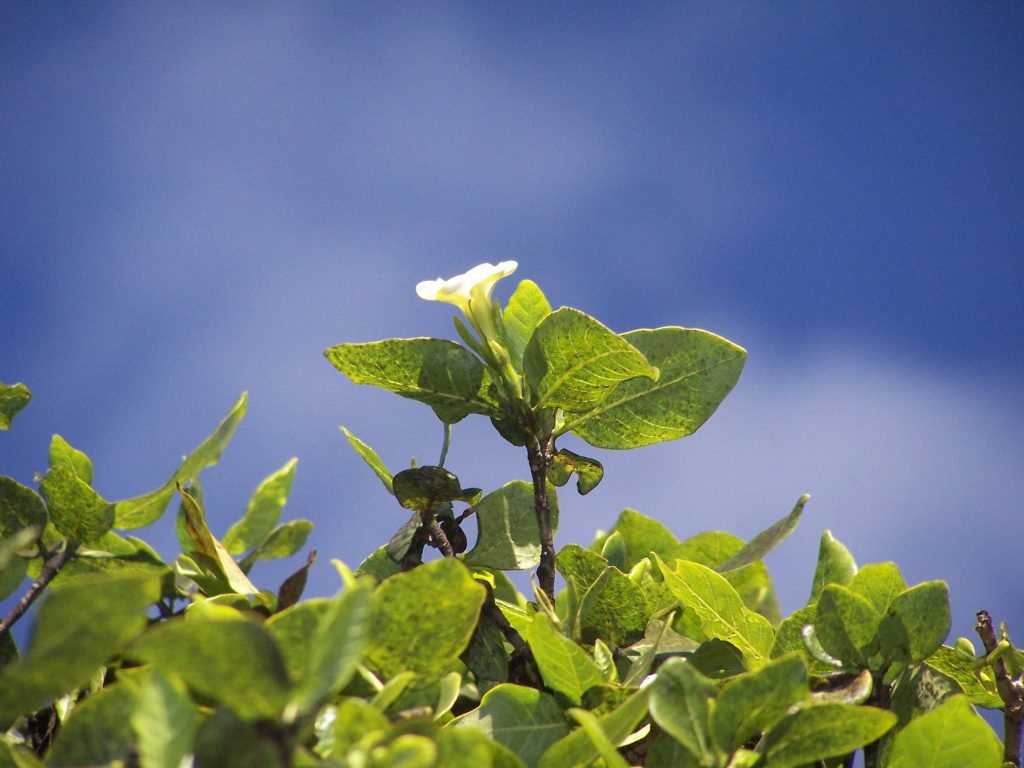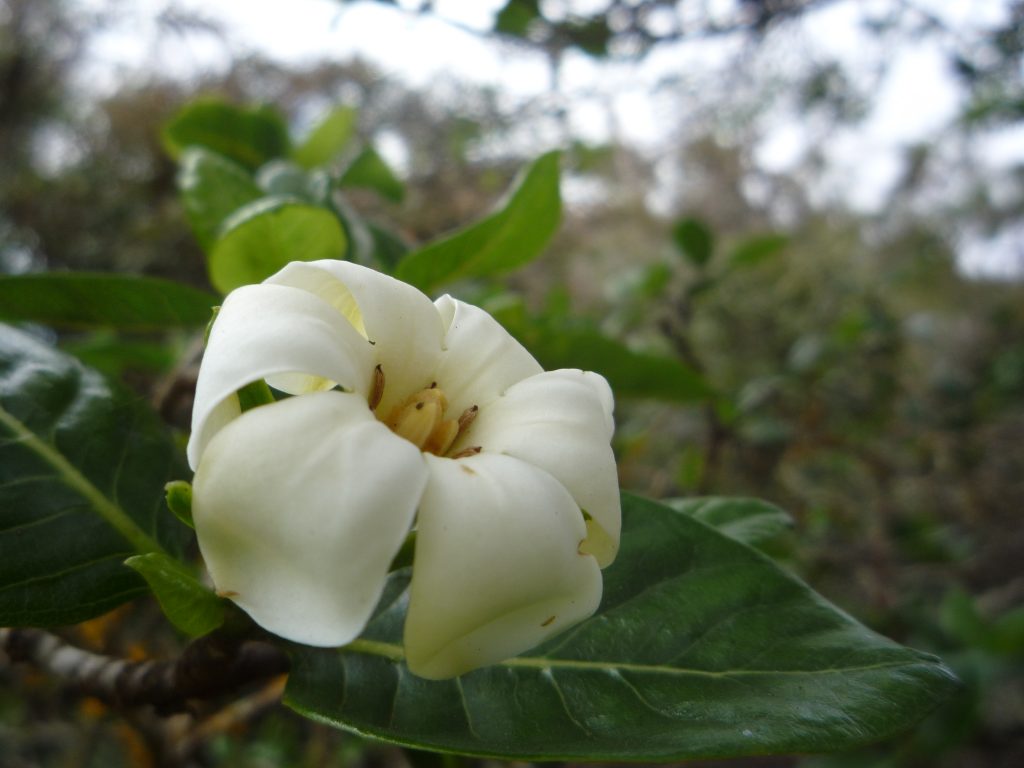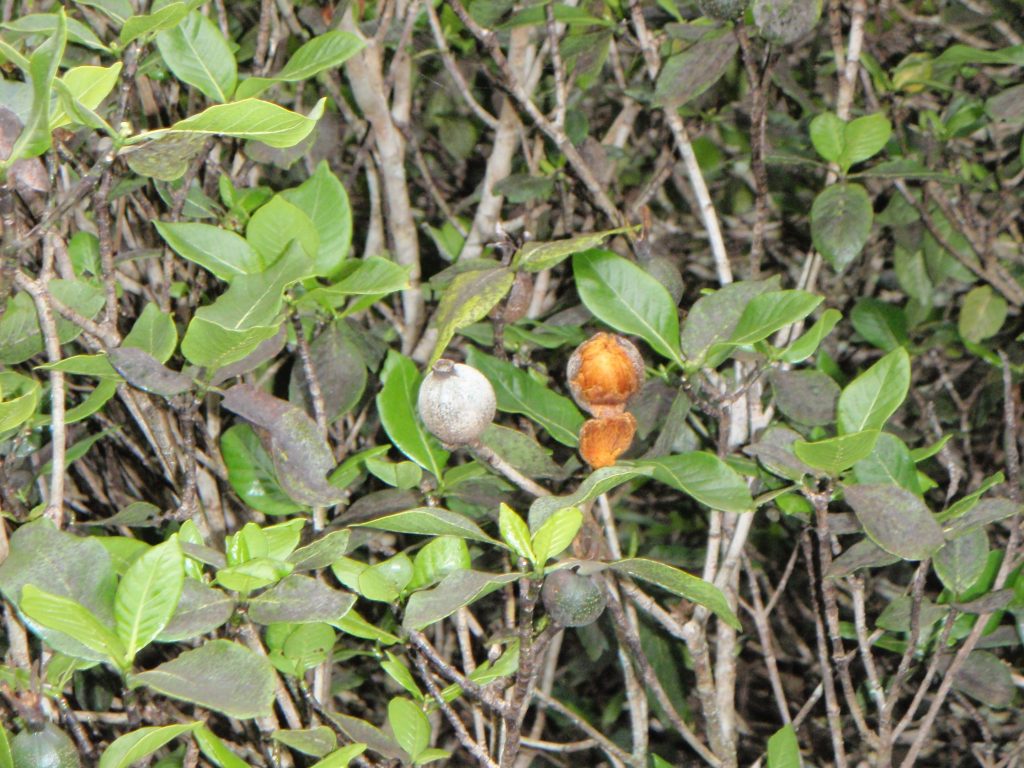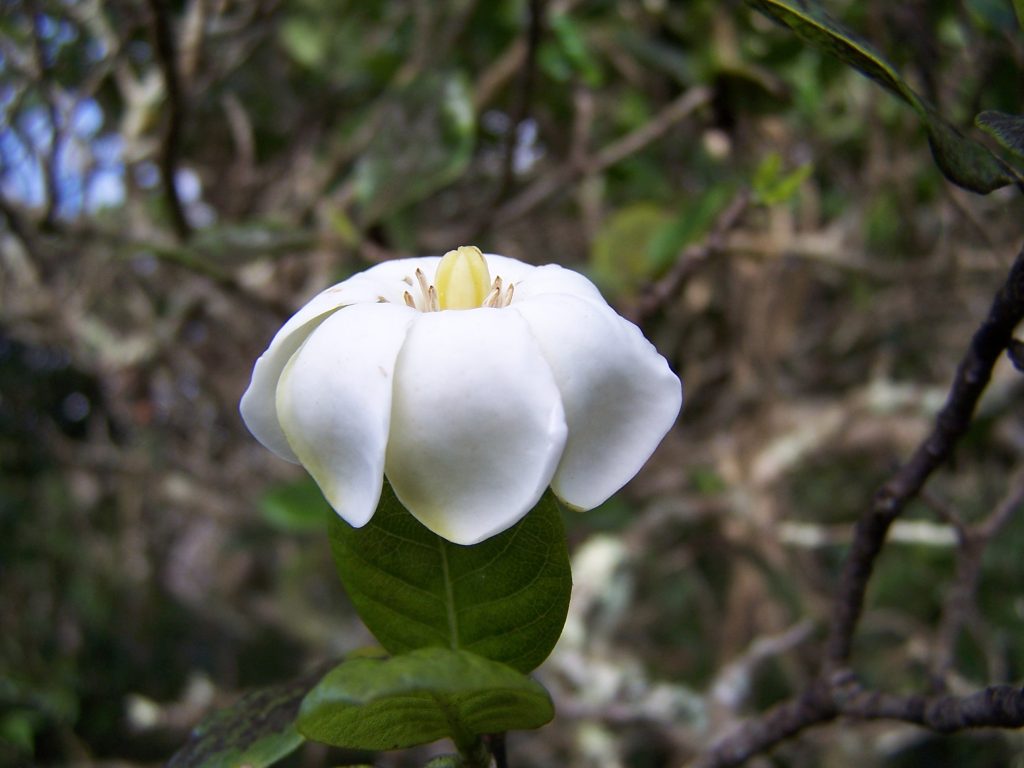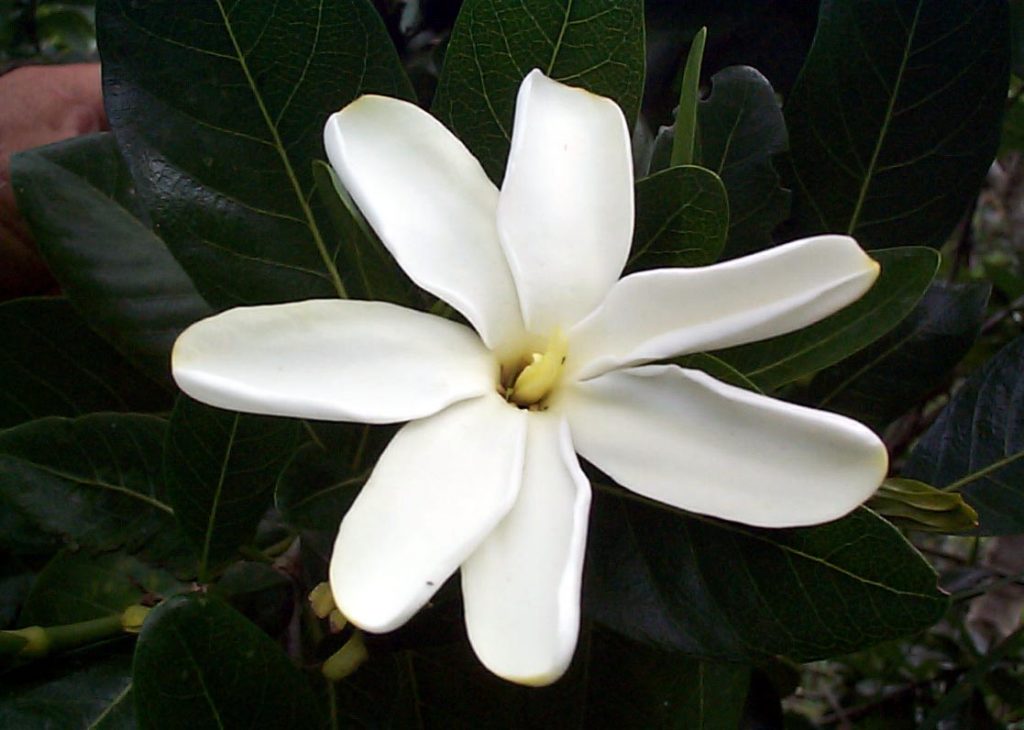Nanu
Names
- ʻŌlelo Hawaiʻi: Nanu or nā’ū
- Common: Forest gardenia or Hawaiian gardenia
- Scientific: Gardenia brighamii
Conservation Status
- Federal and State Listed as Endangered
- Plant Extinction Prevention Program Target
- IUCN Red List Ranking ‐ CR C2a(i);D
- Hawai‘i Natural Heritage Ranking ‐ Critically Imperiled (G1)
- Endemism – O‘ahu, Maui, Moloka‘i, Lāna‘i, Island of Hawai‘i
Species Information
Nanu is a tree that grows up to about 5 m tall. Leaves are few and clustered toward the tips of branches. Flowers are white and fragrant. Nanu is endemic to the Hawaiian Islands and at one time was thought to have occurred on all of the main islands. Judging from its use by the Hawaiians as a cloth dye, its habitat, associated species, and distribution in the early 1900s, it was probably a relatively common member of the lowland dry forest. At the beginning of the 20th century, it was considered common on west Moloka‘i and Maui, but already either extirpated or very rare on the other islands.
Distribution
Lāna‘i, in the Kanepuu area, Wahane Gulch, and Puhielelu Ridge.
Habitat
Dry forest. In rocky gulches, or on plateau lands with deep soils. On the island of Hawai‘i, old forested lava flows. The current habitat has been severely degraded by cattle and goats. The invasion of alien plants such as lantana and a variety of grasses has crowded out much of the dry forest and shades out any seedlings that may have evaded predation from rats. This species is apparently dioecious meaning with male and female flowers on separate trees, meaning it relies on a pollinator to produce viable seeds.
Threats
- Habitat loss from agricultural and urban expansion
- Grazing and trampling by feral ungulates
- Competition with alien invasive plants
- Degradation of habitat through erosion
- Predation of seeds by rats
- Fire
References & Additional Resources
For more information and references visit the State Wildlife Action Plan factsheets. DOFAWʻs species pages and State Wildlife Action Plan fact sheets are provided for general information and are not meant to be a citable, original source of data. If you are a student, researcher, or writer looking for a citable source, please explore the references below or find other original data sources, rather than citing these webpages. The references below were provided by the authors of the State Wildlife Action Plan fact sheets at the time of drafting:
International Union for Conservation of Nature and Natural Resources, 2004, IUCN Red List of Threatened Species: Data Base Search, https://www.redlist.org/search/search‐basic.html.
Hawai‘i Natural Heritage Program, 2005. Hawaii Natural Heritage Program Search, https://www.hinhp.org/printpage.asp?spp=PDMAL0H0A0.
US Fish and Wildlife Service. 1985. Final Listing, Endangered ETWP; Determination of End. Status for Gardenia brighamii (Naʹu or Hawaiian Gardenia) & Withdrawal of Proposed Designation of Crit. Hab.; Federal Register, Vol. 50, No. 162, (21‐AUG‐85), 50 FR 33728 33731, 4 pp.
Wagner, W.L.; Herbst, D.R.; Sohmer, S.H., 1999. Manual of the Flowering Plants of Hawaiʹi‐‐ Revised Edition. Honolulu, HI: University of Hawaii Press and Bishop Museum Press. 1853p.
Wagner, W. L., D. R. Herbst, and D. H. Lorence. 2005. Flora of the Hawaiian Islands website. https://ravenel.si.edu/botany/pacificislandbiodiversity/hawaiianflora/index.htm [August, 2005].

